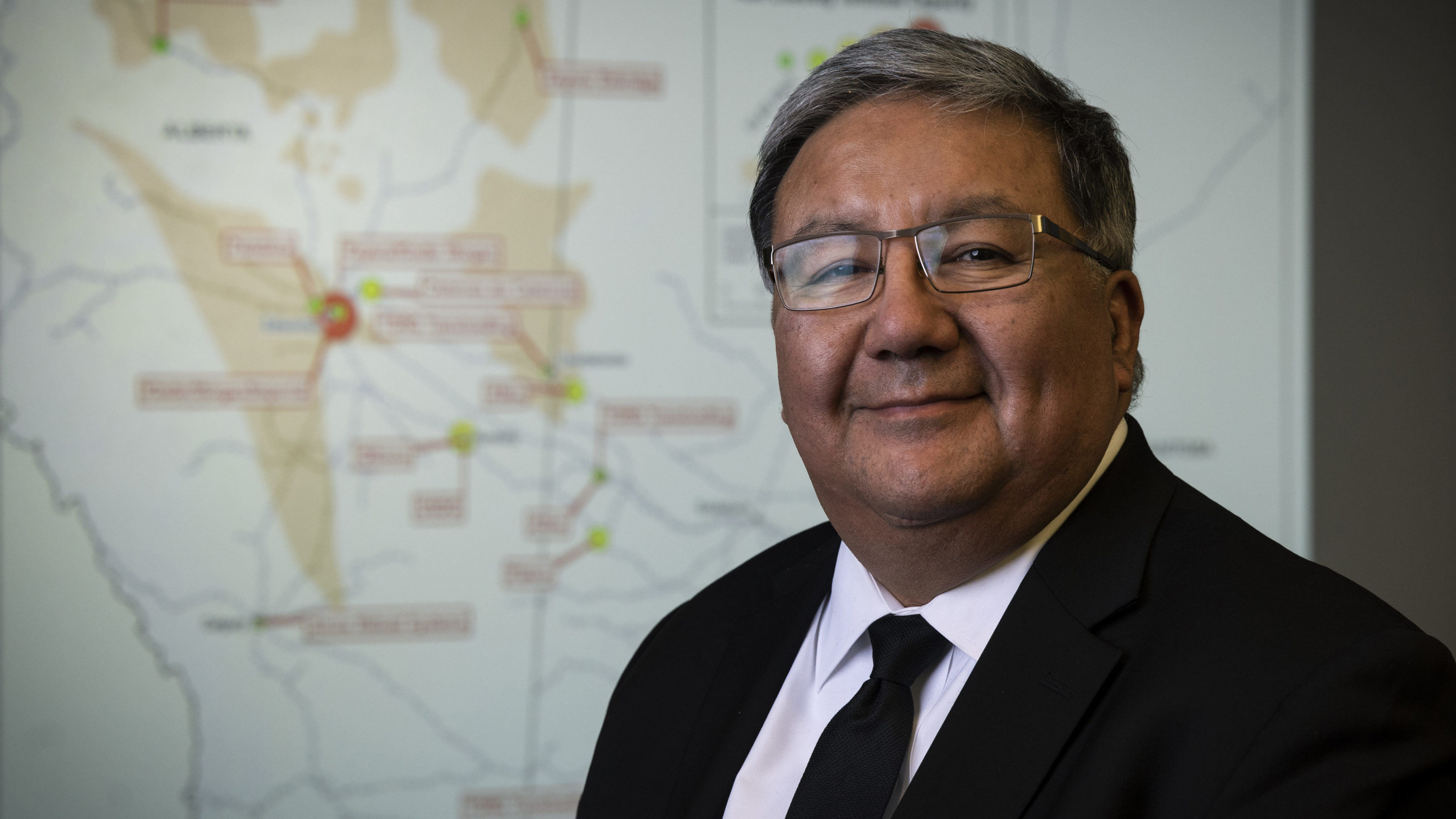The head of the National Coalition of Chiefs (NCC) says Ottawa’s proposed oil and gas emissions cap couldn’t come at a worse time for Indigenous communities.
Dale Swampy says the cap threatens the combined prospect of higher costs for fuel and groceries, along with fewer economic opportunities like jobs and revenues from involvement in energy projects.
“Any small fluctuation in the economy is affected on our communities tenfold because we rely so much on basic necessities. And those are going to be the products that increase in price significantly because of this,” says Swampy, who founded the NCC in 2016 to fight poverty through partnerships with the natural resource sector.
He says that of particular concern is the price of fuel, which will skyrocket under the emissions cap because it will force reduced Canadian oil and gas production.
Analysis by S&P Global found that meeting the cap’s requirements would require a production cut of over one million barrels of oil equivalent per day (boe/d) in 2030, and 2.1 million boe/d in 2035.
“Production gets reduced, and the cost of fuel goes up,” Swampy says.
“Our concern is that everything that has to do with both fuel for transportation and fuel to heat our homes is amplified on First Nation communities because we live in rural Canada. We live in isolated communities, and it costs much more for us to operate our daily lives because we have to travel much further than anybody in a metropolitan area. So, it’s going to impact us greatly.”
Indigenous communities are already stretched financially, he says.
“What you could buy in 2019 terms of meat and produce is almost double now, and even though the inflation rate is trending downwards, we still haven’t gotten over the impact of what it costs for a bag of groceries these days,” Swampy says.
“In our communities, more than half are under the age of 21, so there’s a lot of bigger families out there struggling to just get food on the table.”
The frustrating timing of the cap is that it comes amid a rising tide of Indigenous involvement in Canadian oil and gas. Since 2022, more than 75 Indigenous communities in Alberta and B.C. have agreed to become part owners of energy projects.
Three major projects – the Trans Mountain Pipeline Expansion, Coastal GasLink Pipeline and LNG Canada export terminal – together have spent more than $11 billion with Indigenous and local businesses.
“We’re at a turning point right now. There’s a real drive towards getting us involved in equity opportunities, employment opportunities, and contracting opportunities,” Swampy says.
“Everybody who didn’t talk to us in the past is coming to our front door and saying, ‘Do you want to work with us?’ It couldn’t come at a worse time when we have this opportunity. The emissions cap is going to reduce the amount of activity, and it’s going to reduce the amount of investment,” he says.
“We’re part of that industry now. We’re entrenched in it now, and we have to support it in order to support our people that work in this industry.”
Economic growth, and more time, is needed to fund development of low emissions energy sources without ruining the economy, he says.
“I think we need more consultation. We’d like to see them go back to the table and try to incorporate more of a sustainable strategy for emission reductions,” Swampy says.
“We’re the only country in the world that’s actually incorporating this type of legislation. Do you think the rest of the world is going to do this type of thing? No, they’re going to eat our lunch. They’re going to replace the production that we give up, they’re going to excel in the economy because of it, and they won’t talk about significant emission reduction initiatives.”
The unaltered reproduction of this content is free of charge with attribution to the Canadian Energy Centre.
